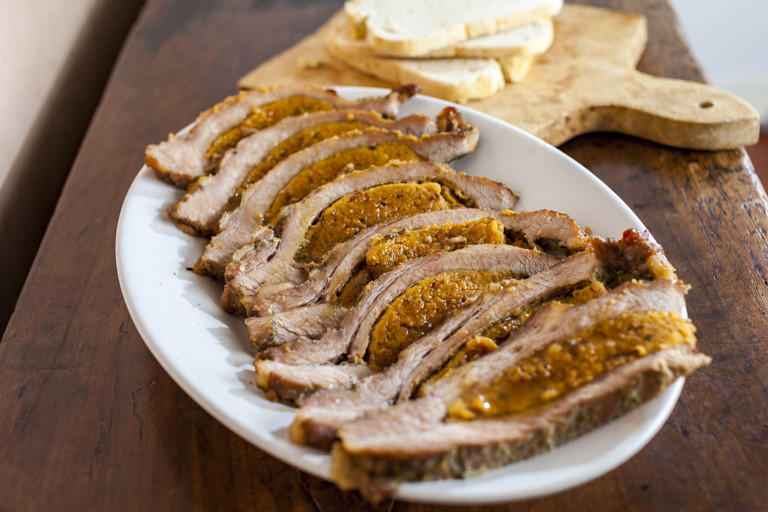Roast belly of veal with cep and Parmigiano Reggiano
This beautifully marinated veal meat, stuffed with a rich, umami mixture of cep (or porcini mushrooms as they are often known) and Parmigiano Reggiano cheese is slow roasted until meltingly tender. A drizzle of intensely flavoured cooking juices adds the final touch of moisture and aroma.
The highly productive soil of northern Italy yields exceptional dairy products and meats from animals that graze on the lush slopes. This dish features both – great handfuls of Parmigiano Reggiano, made with this fatty mountain milk, and light, tender veal. I was taught this dish by Silvana Ghillani, a fantastically accomplished home cook from the town of Calestano, where I visited recently to explore the many uses of Parmigiano Reggiano.
A woman with a reputation for extraordinary production in the kitchen, she opened her house to us for a multi-course feast. Central to the meal was this roast belly of veal, marinated overnight in herbs and other aromatics, then stuffed with her own homemade breadcrumbs, dried cep (porcini mushrooms) and vast quantities of Parmigiano Reggiano cheese. Cooked very low and very slow, the meat is incredibly tender, basted in white wine as it roasts, with the filling moist and beautifully seasoned. After careful carving, the final, elegant slices are drizzled with the concentrated cooking juices for even more moisture and flavour. Her mushroom ravioli, Parmigiano Reggiano gnocchi and caramelised walnut cake (before and after dinner!) will also linger in my mind for a long time to come.
Both the meat and the filling benefit from being made the day before, so they can rest overnight, allowing the flavours to penetrate and combine. The roasting process is also lengthy, but largely hands-off.
Great served with more of that homemade bread, to mop up the juices, as well as plenty of seasonal vegetables to balance the rich, savoury meat.
All images courtesy of John Holdship unless otherwise credited.
Ingredients
Metric
Imperial
- 1 veal belly, cut to form a pocket (ask your butcher)
- 400g of Parmesan
- 200g of breadcrumbs
- 125ml of dry white wine
- 50g of cep mushrooms, dried
- 3 sprigs of rosemary, leaves picked
- 3 garlic cloves, peeled and trimmed with any green core removed
- 2 eggs
- 1 handful of sage leaves
- 1 tbsp of white wine vinegar
- 1 shallot
- 1/2 vegetable stock cube
- sea salt
- extra virgin olive oil
- tomato purée
- freshly ground black pepper
- freshly grated nutmeg
Method
Get in touch
Please sign in or register to send a comment to Great British Chefs.


